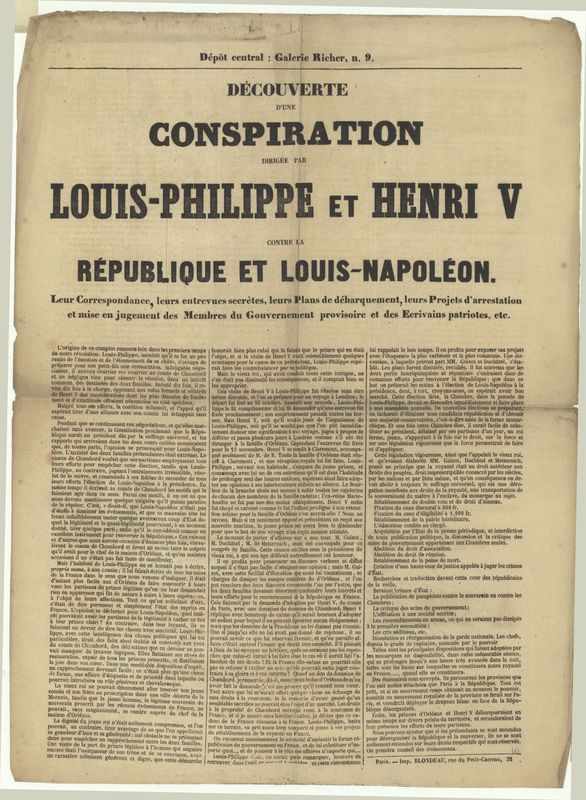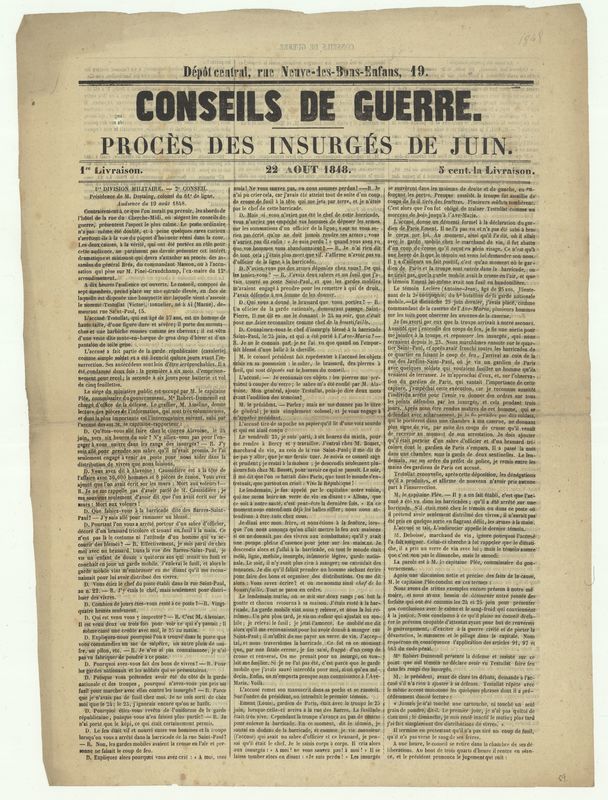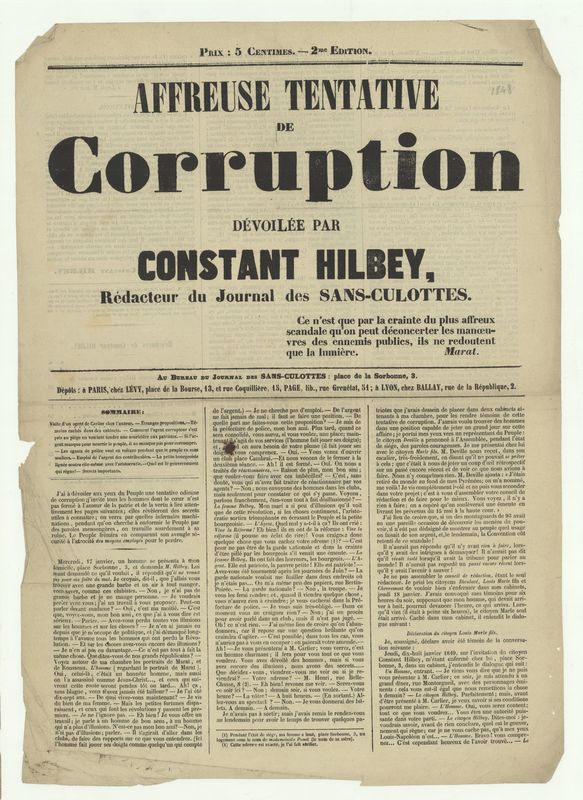Political Dissent: Allegiances and Intrigue
Paris throughout 1848 was a city of shifty allegiances and intrigue. In this collection of posters, we explore the violent acts like assassination attempts and political conspiracies that gripped the public's attention and would lay the seeds of hysteria that only furthered the divisions between the people. However, such hysteria can sometimes force the unlikeliest of allegiances between parties or factions in an attempt to offer some sort of stability. The everchanging scope of political allegiances and constant denunciations between parties and factions help give an idea of how tense the climate must have been in 1848 Paris.





